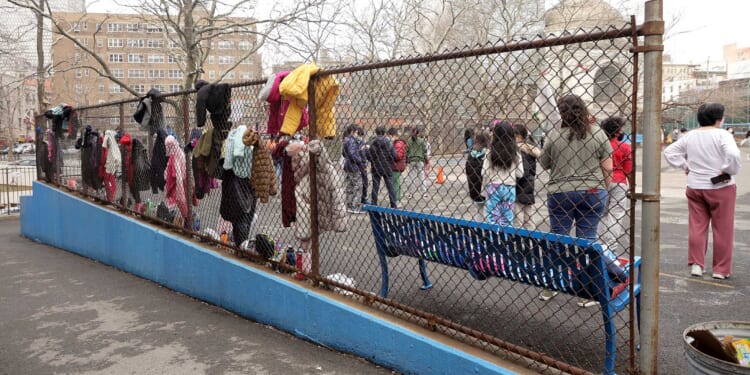
One pressing issue, among others, at stake in today’s mayoral election is mayoral control of New York City public schools. Zohran Mamdani, the frontrunner, has promised to end it. But ending mayoral control—regardless of who the mayor is—would set back the city’s students.
In most countries, each region or city has a unified leadership system that runs all the schools. In the United States, by contrast, more than 99 percent of schools are governed by dispersed, local boards. New York City is an exception. In 2002, New York State granted Mayor Michael Bloomberg’s bid for unified oversight of the nation’s largest school district.
Finally, a reason to check your email.
Sign up for our free newsletter today.
The effects have been dramatic. Graduation rates for four-year cohorts rose from 53 percent in 2003 to 83 percent today. Black and Hispanic students have made the most dramatic gains, with both groups’ graduation rates rising more than 30 percentage points in that time.
The city’s students have outperformed statewide averages. In 2001, before mayoral oversight, Gotham’s eighth-graders lagged 12 points behind average statewide proficiency levels in reading. By 2015, that gap had narrowed to just two points. By 2019, the city surpassed the state for the first time since statewide results were publicly reported in 2001, a lead it maintained through 2024.
Under mayoral oversight, the city’s black and Hispanic students have made dramatic gains relative to their counterparts statewide. In 2019, 43 percent of black and 42 percent of Hispanic eighth-graders in Gotham were proficient in English Language Arts, surpassing the statewide levels of 37 percent and 39 percent, respectively. By 2024, 50 percent of black students and 46 percent of Hispanic students in the city were ELA proficient, compared with 43 percent for both groups statewide.
Other groups have made similar progress. The city’s economically disadvantaged students, for example, outperformed those statewide by seven points in eighth-grade reading proficiency in 2024. Students with disabilities in New York City, once six points behind those statewide, are now six points ahead.
New York’s gains under mayoral control are particularly impressive when compared with the performance of other large U.S. school systems. Between 2003 and 2024, eighth-grade reading proficiency in New York rose from 22 percent to 29 percent, in line with the national average. Over the same period, by contrast, Los Angeles’s eighth-grade reading proficiency increased from 11 percent to 22 percent, and Houston’s from 14 percent to 21 percent—proficiency levels, in each case, far below the national average. In 2023, frustrated by years of limited academic progress, the Texas Education Agency dissolved Houston’s locally elected school board and replaced it with the state-selected board of managers.
A key benefit of mayoral control is leadership stability. In board-governed systems, superintendent turnover is high, with the average tenure less than three years, according to the Council of the Great City Schools. Between 2018 and 2023, about three of four board-controlled districts saw at least one change in superintendent. Los Angeles illustrates the challenge. The nation’s second-largest school district has seven board members who serve staggered four-year terms. The city holds elections every two years and has seen 12 cycles since 2002.
Despite two decades of gains, the New York State Board of Regents recently described the results of mayoral control in Gotham as “mixed.” The report focuses on process rather than performance, elevating equity and representation over student outcomes. Yet outcomes are the clearest measure of success. Under mayoral control, New York City has recorded increases in graduation rates and proficiency on both state and national measures.
While some public testimonies complain that mayoral control excludes parents and teachers, the city’s own surveys tell a different story. Most recently, the 2025 NYC School Survey indicates that 98 percent of the city’s teachers say their schools help families advocate for their children. Most parents report strong communication with school leaders. In practice, mayoral oversight and community input aren’t incompatible but mutually reinforcing.
New York City is a model of what sustained, accountable leadership in public education can achieve. While the city has made measurable progress, it still has a long way to go. The question of whether to preserve mayoral control is about more than who runs New York City’s schools. It’s about the future of the city’s students. Gotham’s next mayor should commit to preserving a system that has improved the prospects of thousands of kids—particularly the most disadvantaged.
Photo by Michael Loccisano/Getty Images
City Journal is a publication of the Manhattan Institute for Policy Research (MI), a leading free-market think tank. Are you interested in supporting the magazine? As a 501(c)(3) nonprofit, donations in support of MI and City Journal are fully tax-deductible as provided by law (EIN #13-2912529).
Source link


















